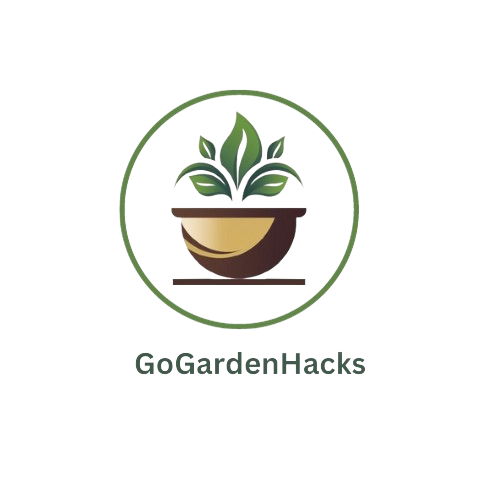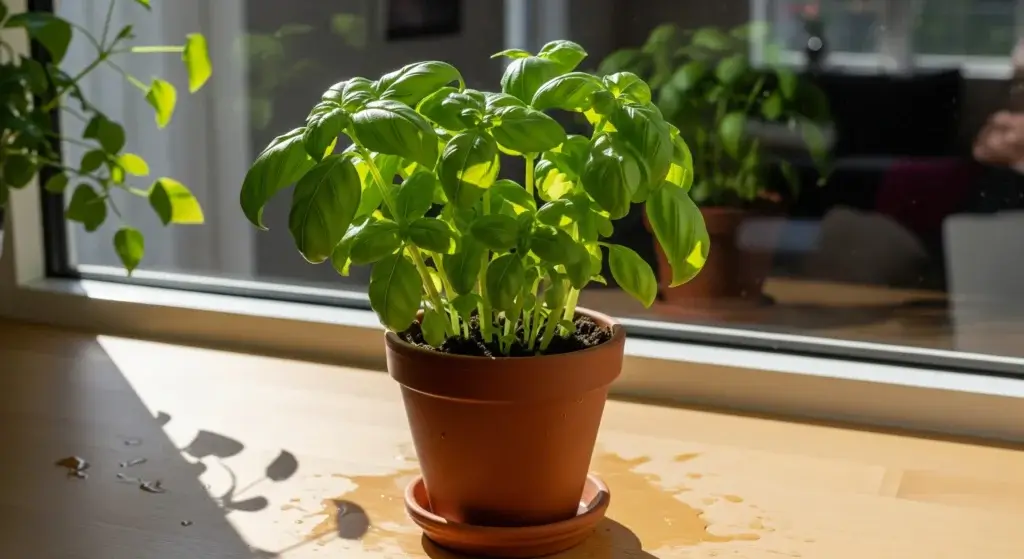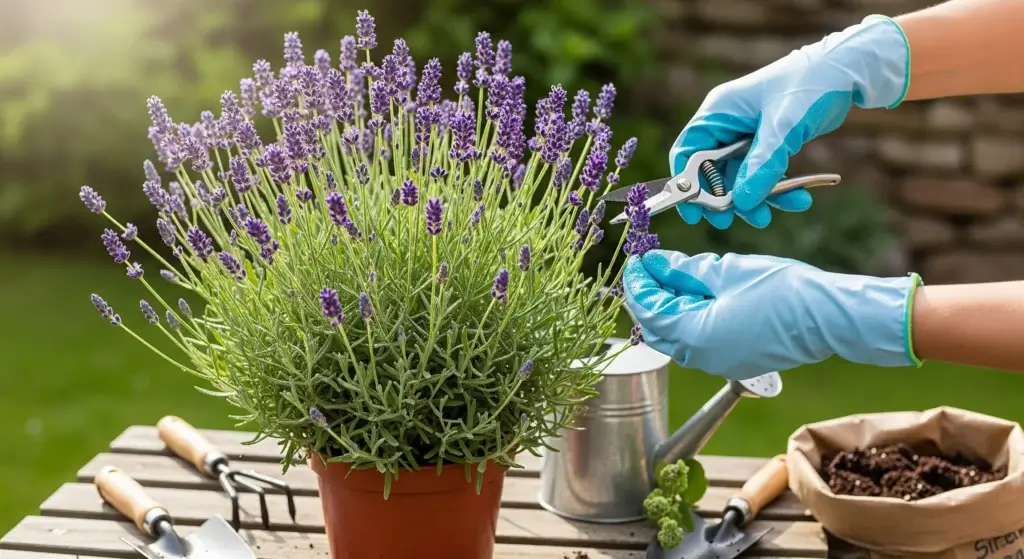Growing juicy, healthy tomatoes is the dream, but when those green leaves start turning spotty, yellow, or brown, it feels like your plants are crying for help.
Leaf discoloration is basically your tomato’s SOS signal — sometimes it’s just a nutrient issue, other times it’s a full-on disease that could wreck your harvest.
Learning to “read” those leaf clues is like unlocking tomato secret code.
Do it right, and you’ll save your plants, boost your harvest, and feel like a garden pro instead of watching your crop flop.

Common Types of Leaf Discoloration and Their Patterns
Yellowing (Chlorosis)
Yellow leaves are like your tomato’s way of waving a little “help me” flag.
The where and how they turn yellow tells you a lot.
- Bottom-up yellowing: If the lower leaves turn yellow first, that’s usually a nitrogen issue.
- Interveinal yellowing: If the veins stay green but the spaces between go yellow, think iron or magnesium problems. It looks like the leaf got striped pajamas.
- Uniform yellowing: Whole leaves going pale? That usually screams overwatering, root drama, or your plant just being straight-up starved of essentials.
Browning and Necrosis
Brown spots are the tomato version of “we’ve got a serious problem.”
- Tiny dark dots: That’s often Septoria leaf spot—a common fungus that leaves little polka dots.
- Water-soaked patches that go brown: Those are bacterial issues or late blight, which is like the horror movie villain of tomato diseases—fast and destructive.
Red and Purple Discoloration
When leaves turn red or purple, it’s usually about phosphorus deficiency, cold stress, or sometimes a virus.
- Purple/red undersides or edges: That’s the classic phosphorus SOS, especially if the plant looks stunted.
- Cold stress: Chilly nights can make your plant produce anthocyanins, giving leaves a purplish tint. If it warms up, they’ll bounce back.
Major Disease-Related Discolorations
Early Blight
Think of early blight as the “target practice” disease—brown spots with bull’s-eye rings.
It starts low on the plant and works its way up, eventually making leaves yellow and fall off.
If you ignore it, your tomatoes get sunburned (aka sunscald). Fungicides and better airflow are your best defense.
Late Blight
This is the boss-level disease. Late blight can wipe out your entire plant in just days, especially in cool, wet weather.
Instead of rings, it makes big, dark, water-soaked blotches that look nasty.
Bonus nightmare fuel: in humid weather, you’ll see fuzzy white mold underneath the leaves. Once you spot it, act fast—it’s ruthless.
Septoria Leaf Spot
Septoria is like death by a thousand cuts.
It creates tons of tiny dark spots all over the leaves, with little black dots in the middle (those are fungal fruiting bodies).
It won’t usually kill your plant, but it can strip off enough leaves to tank your harvest.
Bacterial Diseases
Speck and bacterial spot are the deceptive cousins. They love moist conditions and are splash spread by water.
- Bacterial spot: Small, dark lesions that coalesce together with a yellow halo.
- Bacterial speck: Small black spots with yellow halos.
The not-so-good news? Once they’ve arrived, there is no cure—prevention and good hygiene practices (disinfecting equipment and not splashing water around) are your best actual arsenal.
Nutrient Deficiency Symptoms
Nitrogen Deficiency
If your tomato leaves at the bottom start turning pale yellow and creeping upward, that’s a nitrogen problem.
The plant is literally stealing food from old leaves to feed new ones.
End result? Yellow, sad leaves, stunted growth, and fewer tomatoes.
Phosphorus Deficiency
Purple leaves? Don’t freak out—it’s usually phosphorus.
It shows up more when it’s cold, since roots can’t take it up as easily.
The whole plant can look stunted and slow, and unlike nitrogen, it doesn’t follow a neat bottom-to-top pattern.
Potassium Deficiency
Look for crispy, burnt-looking edges on older leaves while the centers stay green.
That’s potassium saying, “I’m out.” Without enough, your fruit won’t grow well, won’t store long, and the plant becomes a disease magnet.
Magnesium Deficiency
This one’s easy to spot: leaves look striped because the veins stay green while everything in between turns yellow.
It usually starts on older leaves, and if it gets bad, the yellowed parts turn brown and crunchy.
Environmental Stress Indicators
Water Stress
Tomatoes are drama queens when it comes to water.
Too much? Bottom leaves turn yellow, roots rot, and whole branches can collapse.
Too little? Leaves get dull, edges crisp up like burnt chips, and plants wilt in the heat, only to perk up again at night.
Temperature Stress
Cold snaps turn leaves purple, usually temporary unless it drags on.
Extreme heat? Leaves go pale, curl up like they’re trying to hide, and fruits can get sunburned if too exposed.
Light Issues
Too little light makes plants stretchy and pale—like they’re reaching for the sun but never quite get there.
Too much light too fast? Leaves can bleach, especially if you throw a shade-grown plant straight into full sun without warning.
Diagnostic Strategies and Tools
Visual Assessment Techniques
Start like a detective: scan the whole plant, then zoom in on the leaves.
Note which leaves show problems first and how things change over days.
Take photos or quick notes — it’s basically keeping a plant diary so you can spot trends instead of guessing.
Think of it like snapping selfies to catch a slow glow-up or a meltdown.
Pattern Recognition
Train your eye to read patterns — they’re the clue map. Check:
- Location: upper, lower, or all over?
- Symmetry: one side only or both?
- Progression: fast or slow?
- Associated signs: wilting, stunted growth, fruit problems?
Those four tell you whether it’s a nutrient issue, water/temperature stress, or disease.
When to Seek Professional Help
If multiple symptoms appear, things spread fast, or your fixes don’t work, get help.
Local extension agents, plant pathologists, or experienced nursery pros can save you time and plants.
Also run a soil test — visual symptoms lie sometimes, but lab results don’t.
Prevention and Early Intervention Strategies
Cultural Practices
Think of this as giving your tomatoes VIP treatment.
Space them out so they can “breathe,” mulch to keep soil steady and block splashy diseases, and water smart — drip or soaker hoses > spraying leaves. Wet leaves are basically a party invite for fungi.
Soil Management
Healthy soil = healthy plants. Test your soil before problems show up, not after.
Add compost or aged manure to boost structure and nutrients.
Keep pH in check too — if it’s off, your plants can be surrounded by food they literally can’t eat.
Variety Selection
Pick the right tomato squad. Disease-resistant varieties are like plants with built-in armor.
But don’t just copy what works for someone across the country — go with varieties suited for your climate and local disease threats. Local advice = gold.
Treatment and Recovery Methods
Organic Solutions
Go gentle first. Compost tea = a plant smoothie packed with nutrients and good microbes.
Organic fungicides (made from friendly bacteria/fungi) can keep the bad guys in check, but they’re more like bodyguards than doctors — prevention, not cure.
Chemical Interventions
If things get real bad, sometimes you need the heavy stuff: fungicides.
Use them early, read the label like it’s a recipe, and rotate types so the fungi don’t get smart and resist.
And remember — if you’re eating those tomatoes, check the wait time before harvest.
Recovery Support
Sick plants need TLC, not bootcamp. Don’t blast them with fertilizer or sudden changes.
Healing takes time — think weeks, not days.
Your job? Keep them comfy, stop new problems, and let them bounce back at their own pace.
Conclusion
Reading the leaves of tomatoes is decoding the secret message — they’re literally saying what’s what.
Now that you know what the signs (spotts, yellow, purple aura, etc.) look like, you’ll be a whole lot more sure of keeping your plants healthy and content.
The real trick? Catch problems early.
Healthy soil, good watering habits, and proper spacing are like your plant’s gym membership — they make it stronger against stress and disease.
Prevention beats fixing a disaster every time.
And hey, no two gardens are the same. What works in mine might flop in yours, so don’t be afraid to ask local plant nerds for advice.



